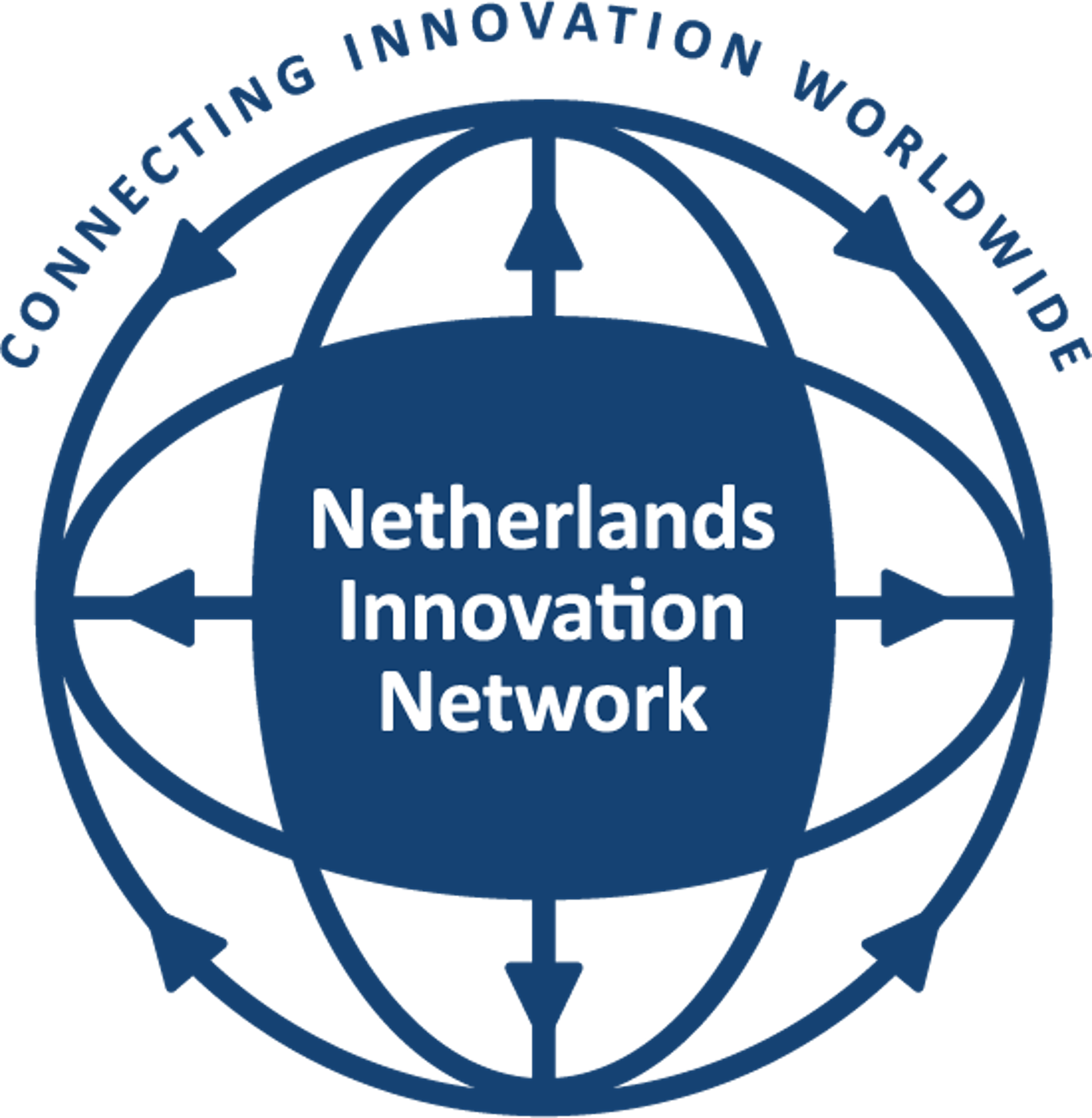




Nanjing leads China in Pushing cultured meat. In November 2019scientists from Nanjing Agricultural University created China’s first piece of cultured pork made of stem cells from the muscle tissue of pigs, a milestone in the industry.
In this episode we will talk to Dr. Ding’s Shijie, associate professor at the Nanjing Agricultural University in China and CTO at a startup called Nanjing Zhouzi Future Food Technology. Or in English Joe’s Future Food. As part of the research team led by Professor Zhou Guanghong, Dr. Ding managed to replicate natural tissue growth in order to create China’s first piece of cultured meat. Minced pork. A breakthrough with great impact, given the fact that pork is a staple food in China.
After the establishment of Joe’s Future Food, the start-up received ¥20 million in financing from Matrix Partners China (经纬创投因). The funds are intended for the development and large-scale production of cultured meat and accelerating the application of related products.
We will talk with Dr. Ding Shijie and his scientific achievement. What are the current hurdles to produce on a large-scale and what will be the future impact?
[00:00:00.180] – HostWelcome to the seventh episode of Innovation Matters, a podcast organized by the Netherlands Innovation Network. This episode we’ll be talking about cultured meat and is broadcasted from Shanghai, China. [00:00:30.120] – Host
Today, we will talk with Dr. Ding’s Shijie, associate professor at the Nanjing Agricultural University in China and CTO at a startup called Nanjing Zhouzi Future Food Technology. Shijie has been a true groundbreaker throughout his career when he was part of the research team of Dr. Guanghong Zhou at the Nanjing Agricultural University in 2019, Shijie created China’s first cultured meat, also called clean meat, lab grown meat or in vitro meat. Meat grown from pig muscle stem cells. The stem cells taken were cultivated for 20 days and multiplied dramatically into primitive muscle fibers to become a five gram piece of meat. This success in the lab led to the establishment of a new startup which would bring this technology to the market. Dr. Ding Shijie is now the chief technology officer of Nanjing Zhouzi Future Food Technology. The company is the first cell cultured meat production, research and development platform in China. Last December, they received 20 million Yuan of financing, which is approximately two and a half million euros. And this money will be used for the further development and large scale production of cell cultured meat, Dr Ding Shijie. Welcome. Thank you so much for taking the time for this interview. Is there something I missed in my introduction about you? [00:01:47.220] – Ding Shijie
Hello, Marita. No, I think that’s probably for my introduction. But I want to say one thing, because I also studied at a master university for about two and a half years. That’s also very important. [00:02:01.620] – Host When did you start this? [00:02:03.660] – Ding Shijie
I go to the Netherlands in 2017 and finished my PhD in 2019. Then I come back to China. Yes. [00:02:15.480] – Host
OK. Yes, I wanted to ask because I already believed you had a link to the Netherlands. So you’ve been in the Netherlands for two years and then you got back and then in the same year as, as your achievement. Right? Which was both 2019. [00:02:30.120] – Ding Shijie
Yes. But when I lived in the Netherlands, is that at about March. [00:02:36.720] – Host
OK. You left the Netherlands in March 2019 and later that year there was this breakthrough. So you did your PHD, where did you do your Ph.D. in the Netherlands? [00:02:47.220] – Ding Shijie
The Maastricht University. My supervisor was the famous Mark Post. I think you guys should be familiar with him. [00:02:55.320] – Host
I believe he’s the chief scientific officer at Mosa Meat, which is the Dutch cultured meat company. But he’s also a professor of Maastricht university, right? [00:03:03.990] – Ding Shijie
Yes. Mark is my co-writer of my Ph.D. he really helped me a lot to know how what the cultured meat and how the world of cultured meat, certain developments. And also, he he’s very kind because I still remember when I first arrived here the first time he borrowed me the bike. Bike in the Netherlands is very important. Yeah. So I really appreciate his effort. Also both his academic support and also the life support for me to study there at his lab. Yes. [00:03:46.980] – Host
And they’re focusing on beef. And you managed to create the first piece of pork meat, right? [00:03:55.260] – Ding Shijie Yes. In China, yes. [00:03:57.010] – Host
OK, so, well, maybe you can tell a little bit more about your scientific achievement and how this success contributed to this research field in China or maybe even the world. [00:04:10.230] – Ding Shijie
OK, yeah. Thank you. And first I go where my original major was the meat science, you know, the meat processing part. But then my supervisor professor Guanghong Zhou in Nanjing Agriculture University, asked me to start the new research area by that time. 2012. That’s really a new time for cultured meat. So I start working on muscle stem cells in the pig tissue and then I isolate the high purity of pig muscle stem cells activate the cells protein. And then I also go to Mark’s lab and also isolate the high purity bovine muscle stem cells. All these purification method is I think the kind of the first time in the world to isolate the high purity animal muscle stem cells. And this will help the future cultured meat technology to have kind of a very pure and good quality starting sales for future amplification and differentiation to the market to. [00:05:24.240] – Host
Right. So. Yeah, you already we already go in depth. This was about selecting high purity stem cells. I want to go a little bit more in-depth on the research later. So actually, you say in 2012 there was a plan to start research in the field of cultured meat, before that, there was none in China? [00:05:45.030] – Ding Shijie
Not really, because before I also have a student of my supervisor Guanghong Zhou. He studied a little bit about the muscle stem cells and the mesenchymal stem cells in the mouse muscle tissue and to try which kind of source is better for cultured meat. Yeah, that he finished his research and in 2012 and then I took it over. But then I started a pig related research. [00:06:14.010] – Host
So in 2012, when there was not much in terms of science, did you expect to experience this achievement in 2019 already? [00:06:25.380] – Ding Shijie
No, not really. Exactly. During that time I was a little bit confusing. I know cultured meat could be very good for future meat production, but how to make it? That’s a really different question. So I started a pig muscle stem cell research following the muscle stem cell research in mouse. So at that time I still don’t know how to make a muscle tissue that it can be really for finally to be eaten. Yeah, except for the later I go through my research career. I start to learn the technology related to stem cell biology, then with tissue engineering then finally make the tissue. [00:07:10.950] – Host
So back then, what was the support you had for this research in terms of finance, but maybe also among other researchers? [00:07:19.750] – Ding Shijie
Yes, I really have allowed the person helped me to to like finish. But it’s just starting you know. I kind of finished my Ph.D. student thesis. First one was the supervisor in China, Guanghong Zhou. And yeah, he’ll give some financial and also kind of target support. Yeah, cultured meat is very good. You try your best to go through this research. And also he send me to the Chinese Academy of Science to study the stem cell biology. So the next person I need to thank is the person, is my supervisor in the Chinese Academy of Science Professor Ping Ku, she also teach them a lot of technology in stem cell research. And later, professor Zhou also helped me to to study at Mark Post’s lab and also at there, I
learn a lot more about the cultured the meat and the how it works. But also that’s really boost to my interests to further making cultured meat to become true in China.
[00:08:31.440] – HostIt boosted especially the creation of the first meat, the first five grams of meat that probably also boosted national interest even. And I can imagine that there was even more support after that achievement. [00:08:45.990] – Ding Shijie
Yes. Yes. So like when I finished the pork, it’s definitely starting. Because people wanted more. I was really cultured meat to be consumed in the future. [00:08:58.020] – Host
Yeah, yeah. I can imagine. So that when you had, like, your first piece of meat, I can imagine that after all those years, that’s really a revelation. Did it had any personal impact? How did you feel personally when you achieved that? [00:09:13.710] – Ding Shijie
I was exciting at the time. It’s like we really make the kind of very big muscle tissue and the use of food processing method to make it to become edible meat, kind of very similar to the meat test. And very like the meat. So I was really excited during that time. But later that I was a little bit nervous because it’s like a five gram or even 50 gram is easy. But, you know, when we really do make like for future major meat production industry like the many pounds even nowadays a million pounds, that’s kind of really a difficult job. So I’m a little bit nervous, but I will try my best to do that. [00:10:04.620] – Host
You feel pressure to actually produce on a large scale now everybody knows that it is possible. Yeah, I can imagine that you have that feeling. Actually, I’m wondering that five grams of meat. Did anyone try it? Did anyone eat it? [00:10:20.760] – Ding Shijie
Oh, that five gram was much less. For testing, nobody really eat that five grand. We only have the pictures, but later on, 2020, June 6, we made about 50 gram of those cultured meat is kind of similar technology, but we improve the efficiency and then we make meat products. And then we tested about 11 people have tried that kind of Chinese first bite of meat. [00:10:57.220] – Host And did you try it, too? [00:10:58.900] – Ding Shijie Yes, yes. Yes. [00:11:00.460] – Host
And what did you think of the taste? [00:11:03.010] – Ding Shijie
It’s like, it smells very good. Very like meat. And also it’s a little bit like ham. I think we put some addictives a little bit more. It’s like ham, but it’s a little, a little bit soft then normal, traditional meat. It’s soft. So we still need to make more progress. [00:11:25.990] – Host
So the taste is the same, but the structure is maybe a little bit different. [00:11:29.560] – Ding Shijie Yeah, a little soft. [00:11:31.480] – Host
OK, let’s dive deeper into the R&D so we have a better understanding of where we are at the moment and what the challenges are that we face not only in China but but worldwide. So don’t forget that not everybody here has a background as a tissue engineer or maybe even in biology. So let’s try to keep things simple where possible. But if we look at cultured meat in general, what is the technology readiness level or how mature is this technology?
[00:12:03.160] – Ding ShijieOh, I think it’s really caught middle in there. And everybody’s like not everybody, but a lot of people already see cultured meat is there, but still need a little bit of effort to make become commercially available. So technology now is like, yeah, for the stem cells, we have muscle stem cells. Also, Mark has a bovine muscle stem cells and also some other companies like they have fibers or other cell sources. So the cell sources, they are I think the problem could be how efficiently for low cost to amplification those stem cells and then also for later, where you have a lot of cells we need to make it become muscle tissue. So making the muscle tissue for tissue engineering is OK. But how to make those tissues in large amount and also low cost? It’s also could be a little bit a problem. OK, yeah. And then finally, you need to use those muscle tissue as the raw meat to processing it. Now to make it really become a product. It’s kind of easier than those problems we mentioned before. Oh, another thing I forgot is like the. Yeah. The amplification, to amplify those cells in large amounts, we also need the medium then how to produce those low cost medium. That’s also important. [00:13:35.090] – Host
OK, so let me let me summarize that a little bit. So first, you’re talking about isolating stem cells or picking the ones with high purity, like you mentioned before. So stem cells are always the basics, right? OK, and then it’s amplifying them. So that means, well, instructing the cell what kind of cell it should become. Is that correct? [00:14:01.090] – Ding Shijie
Yeah, it’s like maintain their stemness. [00:14:07.180] – Host
OK, because you want them to become a muscle cell and not something like a brain cell or a bone cell, I can imagine. Yeah. Yes. OK, so that’s also one type of research field. And then you said getting the right medium and the medium is used for the cells to grow on, correct. Yeah, OK. And then we have letting them grow in a way that is similar to meat. So you’ll get the same structure, the same tissue. Yes. OK, and then of course the scaling of the process, which preferably should be affordable. So if these are the main different research fields of growing cultured meat, then which one is the biggest bottleneck at the moment? [00:14:57.460] – Ding Shijie
I still think the growing or amplifying the stem cells. It’s kind of a problem because some research on the medical part already developed serum free medium. But it’s still that those still serum free medium are that efficient as the cells cultured in the serum. And also the like, how to transfer those technology to to the livestock stem cells, that’s kind of a thing. And also when you really like develop a medium that’s serum free medium, how to produce this medium in low cost because you also need some nutritions and need some vitamins and something like that. So how to make them in in low cost? It’s also going to be a problem. So I think yeah, growing a lot of cells. [00:15:53.830] – Host
OK, I don’t fully understand that. So the problem is that medium. So actually what does a medium consist of? What’s inside of the medium? [00:16:05.890] – Ding Shijie
The medium is the like for animals. It’s like the grass or some other foods the animals needs. So for the for the sale, it’s like the serum, because the nutrition is in our blood. It’s like the nutrition in our blood, will give the those nutrition to those cells, then the cells can grow. So different cells need different than nutrition. [00:16:29.950] – Host
OK, right. And by now we do know what a muscle cell needs? [00:16:37.390] – Ding Shijie
We know something. We know some like growth factors and also some signal pathways, that interfere molecules. But still, I don’t think we know everything. Make them to be very efficient to grow. [00:16:56.190] – Host
Well, OK. There still room for improvement for the medium. I can also imagine that all other companies worldwide that want to produce cultured meat that they face the same issue. Is this something we can work on internationally to develop the right medium so everyone could use the same product? [00:17:17.710] – Ding Shijie
I think yes. But the problem, people don’t want to. It’s like, Yeah. For collaboration, that’s always very good. It’s like, yeah, I know pig, or I know this kind of signal is very important. So I have my specific parts and then they have the special medium development facility. Then the corporation will have to increase the speed. But now a lot of companies are there, they are there to start. So yeah, every people, I think they want to make kind of those very important medium by themselves so that they can in the commercial way, they want to be the first. Yeah, get a lot of profit. [00:18:09.700] – Host
So there is a certain competitiveness in this field. OK, so this is the scientific bottleneck, you say it’s pretty much the medium. So what do we know about tissue engineering? Because what I understand is that’s also more difficult to create something with a natural structure, if you compare it to a beef patty, for instance. [00:18:33.460] – Ding Shijie
Yes, the lot the whole piece of meat really like the meat tissue is still a difficult thing in tissue engineering method. But, you know, some company already uses some of the plant-based scaffold. Then they try to culture those cells on that. So the final, finally the structure was not really like the the muscle tissue in the animal, but still it’s kind of they have some of those similar texture. OK, so also a larger piece, that is also doable. [00:19:10.690] – Host
The cultured meat research can learn something from the plant based meat research. [00:19:18.790] – Ding Shijie
Yes, I think that that’s doable. And also another thing is some new technology like the 3D printing that’s also can help make a lot of tissue, like the way you print those fiber, the specific direction. But I don’t think it will really make the muscle tissue the same as the muscle tissue in in the animal muscle. But it’s kind of similar bigger piece of meat that’s kind of doable by 3D printing. So new technologies may also help to solve this problem. [00:19:57.580] – Host
I think we should not even try to imitate it one hundred percent. I mean, it is different. So should not be a problem if it also has a slightly different structure, in my opinion. OK, so this these are the research challenges or the. Research bottlenecks, if we talk about scaling and reducing costs, do we already have enough technology to affordably scale up the process? [00:20:23.400] – Ding Shijie
Probably, yes, I would say probably because first, I’m still not the professional to know really everything. We really can make cultured meet, to become low cost. But I see something from other research fields, like for the stem cell amplification, we can still see like the stem cell therapy. They can grow larger amounts of those cells or has a lot bioreactors to make to grow a lot of cells and also make the low cost, maybe serum free medium. We can see the serum free medium can be developed if we put a lot of effort on that. And also the synthetic biology will help to grow kind of a much
cheaper cost factor. So those are very important key factors. And then finally, tissue engineering. We already see some companies are using the plant based material, the protein based material to make the texture a little bit like the the meat and also with cells growing on them. So that’s kind of doable. Finally processing, I think it’s also doable.
[00:21:42.600] – HostIt’s doable, but we’re not there yet. So we need to first improvements in the medium. And also we should be able to grow it actually outside the lab into bioreactors, big bioreactors. Is that a good summary of what you just said? Yes. OK, so I want to mention Singapore. Singapore already has cultured meat available. Last December, a San Francisco based startup won regulatory approval to sell its cultured chicken in Singapore, making Singapore the first nation in the world to approve this meat alternative. Other nations are not even close to Singapore. Why is there such a gap between Singapore and the rest of the world? [00:22:27.150] – Ding Shijie
The gap is there, but it’s not that huge, because the USA, the USA has already make a framework for a cultured meat. Then the FDA will take over the stem cells, isolation, proliferation and confirm the quality of the cells. And the USDA will take over the product pathway and then really become a cultured meat to sell in in the markets then the USDA there will take over those regulation. So also in Europe, there are kind of similar things on there. But still Singapore is the first to approve the cultured meat to be sold in that country. That’s going to be the reason because I also read them on the news, because in Singapore, they say the Singapore is kind of, with only a little agriculture. So a lot of food are import in Singapore. So they really like those high technology foods. That’s the thing. That’s that’s the thing. Yeah. [00:23:31.110] – Host
So I didn’t know actually about Europe and America already having a framework in place that’s new to me that that happened recently? [00:23:40.010] – Ding Shijie
No, it’s it’s all set up 2018 I think. [00:23:44.700] – Host
OK, what about regulation in China? Is there also already a framework? [00:23:50.490] – Ding Shijie
Not really, the government will still go to different countries and all go to different research groups to ask their opinion. They are still thinking about that, but they’re not I don’t think they really make some framework now, but it will probably kind of similar, I think, in the future with the framework. [00:24:12.250] – Host
Maybe when Europe and the USA have a clear regulation in place, then maybe China will follow soon afterwards. OK, so do you think that there should be more international research collaboration into further developing this technology? [00:24:29.150] – Ding Shijie
For sure, I think that yes, because it’s like cooperation can accelerate the speed, for cultured meat to become troo. And yeah, as I said before, there could be some problems about the competition, but it still can have something that can be collaborated by the regulation part, for the government. It’s like how those people in America or in Europe do. Maybe we can learn something and also probably it’s like a, not really cooperation internationally, you know from cooperation between different research areas, but can also help it’s like a stem cell biology and also tissue engineering or stem cell biology and the bio reactor research field that can also help to accelerate the speed. [00:25:25.480] – Host
So the commercialisation process of cultured meat would benefit from more international but also more interdisciplinary research. So something else I was wondering is cultured meat, animal free? [00:25:41.740] – Ding Shijie
Oh, yeah, this question is also a bit difficult. Why? Because if you say truly animal free, I would say no, because the cell source was collected from animal, or at least from the animal tissue. And so, yeah, it’s not animal free, but where we already get the biopsy of those animal, then we can use we can isolate these cells and culture them. All the other things that can be achieved, can be used, can be can be developed in animal free. Because the medium and the bioreactor and the finally the tissue everything. Yes. I think yes. Where we really have breakthroughs through those cultured meat the whole chain of cultured meat technology. I think that can become animal free. [00:26:36.460] – Host
Interesting. So you need a few stem cells in the beginning, which are of course not animal free. But what’s the pay of of these cells? Is there an unlimited amount of meat you can produce from these initial cells or is this capped? And do you need new stem cells in order to create a new batch? [00:26:55.210] – Ding Shijie
I think theoretically we can do unlimited, but according to the knowledge I know, so it’s limited. It’s like maybe use one cow to make maybe one thousand more. But finally, you need something new and it’s like the plant, right? Yeah, you always need the seed. [00:27:18.760] – Host
Right. You need a seed to grow the meat. And in this case, the seed is the stem cell. So maybe this is not fully animal free, but at least it will cause a dramatic decrease in consumption of animals. So, Zhouzi Future Food Technology is the name of your company. What is your ultimate goal you would like to achieve with this startup? [00:27:42.690] – Ding Shijie
In really future way, we would have to produce the meat the more sustainably or better to animal and human health. But for the product, small goals, I would say, like we want to make the pork tissue and also we will, according to our China’s typical eating habits, then we will make some specific products that are suitable for Chinese people. [00:28:12.060] – Host
You will really focus on products that are popular in China, for example, meat for dumplings or moon cakes, that kind of stuff. [00:28:21.180] – Ding Shijie
Yeah. So we are still not to really think about the products because we are still making the progress in the technology. [00:28:29.250] – Host
OK, how many years do you think it will take for you to actually produce this product that you want to produce, to really produce on a large scale? [00:28:39.350] – Ding Shijie
Still on a small scale I think. The very, very large scale could be a longer time. But I think in about the three, three, three years, more or less, we want to really make our products from the Future Food Technology company, which can be sold. And also we will also try our best, or maybe together with some other companies, to start the framework of research about the regulation. [00:29:09.420] – Host
OK, so twenty, twenty four. So but the success of cultured meat is not only depending on research and regulation, it also depends on the public opinion. Is the consumer in favor of the product or not? Do you already know anything about the public opinion in China on lab grown meat? [00:29:27.940] – Ding Shijie
Not really. Because those kind of study about what people think about the cultured meat in China, is
not that much as they do in Europe or the USA. I ask with my friends or I think plan-based meat is also another example. It’s like at the very beginning people are thinking OK, that’s fine, because in China we already have a lot of plant-based meat-like products. But still in last year and this year, a lot of plant- based meat was selling very well in China. And I think because the young children or new generation people would like to try new things, and if those products are as delicious as the conventional meat and also they are they better to the environment. Yeah, yes. Yeah, I think people would like to have a try.
[00:30:24.600] – HostSo let’s say there is a lot of interest in your products in a few years and you start mass production. The process of producing this kind of meat requires enormous amounts of electricity. If this electricity isn’t generated from renewable sources, then the reduction in CO2 from eating cultured meat instead of regular meat is completely canceled out. Is this something you keep in mind while planning your future expansions? [00:30:56.770] – Ding Shijie
Oh, I think yes. I exactly agree with this idea because the way to produce the medium is still need a lot of energy. Because you know, no one I remember those plants they gathered energy from the sunlight. And so I said, yeah, I think of the energy we really need as a renewable energy resource for future food is not the only cultured meat. A lot of, it’s like the electric car. It’s also I think that in the future I would rather use more of those renewable energy. That would really help. Here, we have those ways to get to that renewable energy. It’s doable. [00:31:41.700] – Host
It is, especially in China. Everything is moving very fast here in China. OK, Dr. Ding Shijie, thank you so much for your time and informing us on the developments of cultured meat. [00:31:55.020] – Ding Shijie
Thank you, Marita. And also, yeah, because you are from the Netherlands, I was very glad to see people come from the Netherlands. That’s a really good country there. Thank you. [00:32:08.520] – Host
Thank you. Dr. Ding Shijie associate professor at Nanjing Agricultural University in China and CTO of the cultured meat startup Zhouzi Future Food Technology. If you want more information on the speaker, please visit our website, Netherlands Innovation dot nl. Here, you can also leave a comment. If you would like to reach us, our email is China at NetherlandsInnovation dot nl. The next episode will be published in two weeks and we’ll hope you’ll be tuning in again. Thanks for listening.

